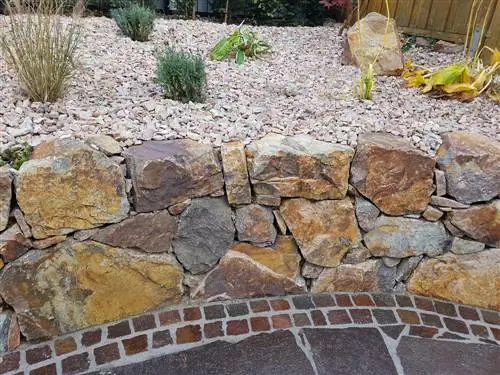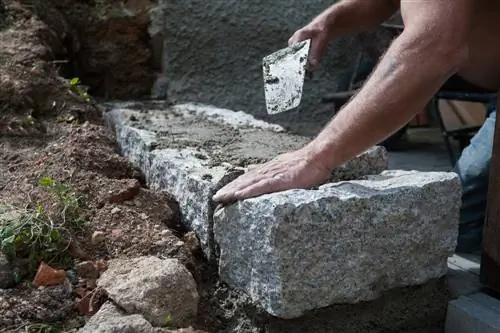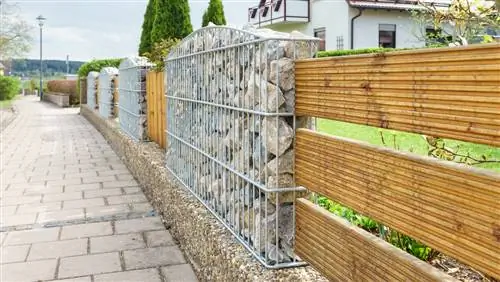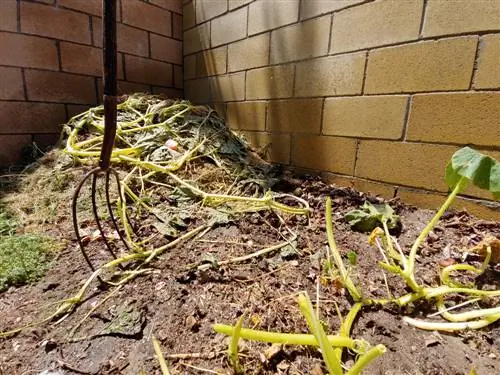- Author admin [email protected].
- Public 2023-12-16 16:46.
- Last modified 2025-01-23 11:21.
Low seating walls and barriers to the terrace are relatively easy to build yourself. This becomes more difficult with free-standing walls that are higher than 120 centimeters. Here you should consider letting a specialist do the work for safety reasons - static calculations of this magnitude require in-depth specialist knowledge.

How do I build a garden wall out of natural stone?
To build a garden wall out of natural stone, first choose suitable stones and decide on a type of wall such as dry stone wall or brick wall. Lay a stable foundation and carefully stack the stones on top of each other. Pay attention to joints, stability and planting options.
Walls made of natural stone have a special appeal
Walls made of natural stone have a very special charm. Regularly hewn or cut stones are ideal for free-standing walls, as they can be easily stacked on top of each other. Different options for building walls are common. The ashlar masonry, as it is known from antiquity, the alternating masonry or the layered masonry are particularly suitable here. This type of bricklaying requires a good design eye and good craftsmanship, as natural stones often need to be corrected and brought into the correct shape.
Masoned natural stone walls
Natural stone walls often have a protective cover, which is ensured with the help of large slabs or stones. The individual layers of the free-standing walls must be connected to one another with mortar, although it should be noted that some types of rock do not tolerate lime-based mortar. Grouting is also done with mortar and a jointing iron (€9.00 on Amazon); any excess jointing material must be carefully wiped off with a wet cloth. Also make sure that the joints are not too wide. That doesn't look nice and also reduces the stability of the wall.
Does not require mortar: dry stone walls
All types of natural stone are suitable for dry stone walls. The best thing to do is to find out which types of rock occur naturally in your region and then use them in your garden. For example, porous tuff stone, fine sandstone, but also porphyry, granite and much more can be used. What they all have in common is the structure and the purpose of providing shelter for as many plants and animals as possible.
What you should pay attention to when building a dry stone wall
Drystone walls are best leaned against a slope because they require ground connection to provide plants with enough food and root space. For safety reasons, the height of the wall should not exceed 120 centimeters - after all, no mortar or other grouting material is used - and should have a minimum thickness of 40 centimeters. It is also important that this wall also has a water-permeable, approximately 20 centimeter thick foundation made of gravel or gravel.
Building dry stone walls
The stones are now placed on top of each other layer by layer, tilted slightly backwards. They should fit together without wobbling. Be sure to avoid cross joints and plan a slightly wider, vertical joint in some places. Here you can fill in soil and plant the joint with rock garden plants or similar. You can maintain stability by installing stones at regular intervals so that their long side faces backwards. Finally, fill the gap between the wall and the ground with some gravel, which you tamp down well.
Tip
A raised bed made of dry stone walls can face all four directions. From the sunny, warm south side to the shady north side, very different planting fields arise in a very small space.






